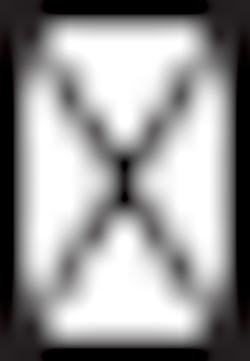USB Digital Attenuators Control 63 dB To 6 GHz
Complementing a line of compact Lab Brick Universal Serial Bus (USB) powered and controlled signal generators, Vaunix Technology Corp. has announced a family of Lab Brick Digital Attenuators with 63 dB of programmable attenuation through 6 GHz. The first two standard models are the LDA-102, with frequency coverage of 0.1 to 1000.0 MHz, and the LDA-602, with a frequency range of 6 to 6000 MHz. Both units are powered and controlled by connection to a personal computer's USB port or a powered USB hub, and provide programmable attenuation from 0 to 63 dB with simple control via the included graphical user interface (GUI) software.
The LDA-102 and LDA-602 Lab Brick Digital Attenuators (Fig. 1) are based on GaAs monolithic-microwaveintegrated- circuit (MMIC) attenuator technology for excellent repeatability of attenuation values. Both units provide attenuation resolution of 0.5 dB by means of programmable steps from 0.5 dB through the maximum attenuation value of 63 dB (see table). The guaranteed attenuation accuracy is 0.3 dB plus 5 percent of a given attenuation setting.
In addition to their programmable attenuation values, the LDA-102 and LDA-602 Lab Brick Digital Attenuators exhibit some insertion loss as a function of frequency. For the LDA-102, for example, dissipative signal losses are a maximum of 6 dB from 0.1 to 100 MHz and 7 dB from 100 to 1000 MHz. For the higher-frequency LDA-602, the insertion loss is a maximum of 7 dB from 6 to 1000 MHz, 8 dB from 1000 to 2000 MHz, a maximum of 9 dB from 2000 to 4000 MHz, and a maximum of 10 dB from 4000 to 6000 MHz.
Due to the nature of GaAs technology, the Lab Brick Digital Attenuators provide a maximum input level of +20 dBm. For both models, the 0.1 dB compression point occurs at an input power level of +22 dBm. The input third-order-intercept point (IP3) is achieved at +46 dBm for a 0 dB attenuation setting on both units, and at +32 dBm for all other attenuation settings.
However, the LDA-102 and LDA-602 Lab Brick Digital Attenuators both enjoy the benefit of extremely fast attenuation switching speed as a result of the GaAs technology. Both units are rated for maximum switching speed of 80 ns, measured as the time for the unit to shift from a 50-percent control level to within 90 percent of a new attenuation setting, no matter how large the step size or change in attenuation.
The LDA-102 and LDA-602 Lab Brick Digital Attenuators are designed for 50The Lab Brick Digital Attenuators are controlled by means of an easy-to-install, simple-to-use GUI program (Fig. 2). It is compatible with Microsoft Windows standard operating systems for personal computers, including Windows 2000, Windows XP, and Windows Vista. The GUI provides selectable attenuation steps of 0.5, 1, and 10 dB, and also allows an operator to program increments of 0.5 dB from 0.5 to 63 dB. The GUI also allows attenuation ramps from 0 to 63 dB, or from any start value to any stop value. The dwell and idle times can be set from 10 ms to as long as 20,000 ms. Vaunix Technology Corp., 242 Neck Road, Haverhill, MA 01833; (978) 662-7839, FAX: (978) 662-7842, E-mail: [email protected], Internet: www.labbrick.com.
